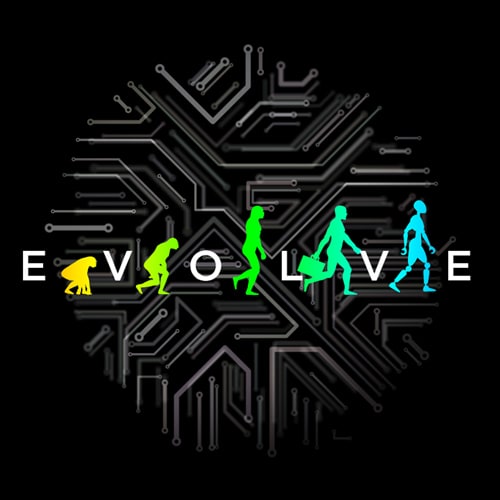Learning in the flow of life has been saved

Perspectives
Learning in the flow of life
An interview with Jonathan Eighteen
Learning in the flow of life was the Number 1 global trend in Deloitte’s 2019 Human Capital Trends report. Learning is becoming more integrated with work and more personal. In order for organisations to be effective in reinventing learning, a cultural shift is required to support continuous learning and focus on helping individuals identify and develop new and much needed skills. We spoke to Jonathan Eighteen, Director at Deloitte, about ‘Learning in the flow of life’. Here’s what you need to know.
The Number 1 global trend this year
Learning and skills development is more critical now than it ever has been. There is a shortage in the talent market and a need to identify different skillsets, possibly from outside your organisation. Progress in technology is changing jobs significantly. This has meant that organisations need to refocus on learning. Rather than it being one of the nice things to do, it is now paramount in most organisations’ minds.
Organisations are looking at whether they need to build skills, to buy them, to borrow them, or, indeed to bot them, making use of artificial intelligence and other technologies. From a workforce planning perspective, this requires a completely different way of looking at things. Organisations need to be strategic about the way that they look at the skilling and re-skilling agenda.
Culture and learning - how can organisations set themselves apart?
Over the last eight to ten years, our research has pointed at the correct culture as being one of the critical drivers of improving the success of learning and in creating greater productivity and benefits for an organisation Three key actions that businesses must take on are:
- Encouraging reflection within an organisation. This is so that managers give individuals and their teams the opportunity to reflect on business as usual. This drives a culture of conversation around the way things are done and the way things are improving
- Ensuring there are ways to demonstrate the value of learning in the organisation. This is not something you do like traditional courses or an e-learnings; it is something you do on top of your daily tasks. This is now crucial and essential, it is actually part of doing your work
- Empowering employees to take responsibility for their own development. Give them skills that are easily accessible and give them the opportunity to take the time to learn because one thing’s for certain: if people do stand still they’re going to become out-dated and not as competitive in the organisation or in the world!
Taking the first step
In a 2017 report that polled around 1,500 firms globally across a number of industries, geographies and size, we saw that only 6% of firms had reached a high impact learning maturity level. That’s only a very small number. But firms that have moved through that particular process to become mature at learning have gone on a journey. I think it’s necessary to look at where you are and understand what you are doing, with regards to L&D, to get a holistic view of the journey.
This can be done by not just looking at the learning department in isolation, but at how it operates in the organisation at large - because learning is moving ever-closer to the business. Having a thorough understanding of spend, of what activities are happening, how technology is being used, is probably the first step. From there you can create a very tangible learning business case, in terms of looking at investments for the future, and locate where you’re going to make a significant impact.
Firms that are enlightened around their use of learning as a strategic lever in the organisation have got the ear of the C-Suite and they’ve definitely got their support to drive through some of these changes. These firms have also created compelling cases in partnership with the organisation, to get them to understand the value of investing in L&D.
How experiential learning fits into the wider suite of learning methods
Experiential learning means many different things to lots of different people. It is the process of learning through experience and learning through reflection or doing. Whether as a child or as an adult, you can grow and learn new things through experimentation - trying different things and seeing how they work, improving every time. It could be through exposure to different activities, thoughts, knowledge, conversations, etc. but it is the reflection on those events that is key.
Some respondents to the Trends Survey said that experiential learning is not available in their organisation, but that is too strong because it does go on all the time. Look at the way that learning occurs in an organisation - say you’re a salesperson out on the road, how do you pick up something to give you a quick tip or performance aid before you go into your next meeting? It could be a conversation with a line manager, looking at what you’ve done and having a quick piece of feedback, influencing how you do that piece of work again. Learning could be a formal course, or an e-learning piece. It could be something you read on the train. It could be something you read on LinkedIn. It could be all of these things – they are all experiential learning.
However, firms that are more mature at learning don’t just do a wider variety of different learning types, but they do so much more of it. It’s available, it’s enforced, there’s a lot more opportunity for it to be undertaken, either at an individual level, or at a team level, across the organisation.
Boosting your learning and enhancing your people
It’s not all about courses but about how you can use work itself as a learning opportunity. Organisations that are working well in this particular area are taking a new approach. They’re using skillsets out of marketing, for example, to truly understand the way in which an individual is doing work and how they are being productive.
Understanding what employees are doing on a day-by-day basis, the environment they are in, the technologies that they are using, and trying to understand how they can put learning into the flow of work, so that it doesn’t become a distraction, but it becomes an aid to improving productivity moving forwards is vitally important. If you have a true understanding, such as a product manager’s perspective of the way that something gets done inside an organisation, and the way that individuals are trying to do work, then you can infuse learning into it and be more tuned in to what employees actually require.
Preparing your existing talent pool
I think giving employees the opportunity to access information and skill-building tools will become more prevalent. We will see an increase in technologies, which will enable people to look at a variety of different topics, not only within the learning department but also the outside world, through course content libraries. Employees should also make sure that they’re picking up on the opportunity to connect and network with specialists and experts inside and outside their organisation as well. Organisations need to make this easy and accessible, so employees can access information whilst commuting or whilst getting ready for a meeting, for example. This approach is becoming much more popular.
It’s important that employees have learning journeys and the opportunity to understand that if they do want to reskill, pivot, change jobs or move into a different area, they can. Organisations then need to follow up by providing the resources that employees require to do that.
This approach will aid reskilling and up-skilling as organisations seek to try and make sure that people are aware of the need to have a hybrid matrix of skillsets. It’s also an organisational imperative to make sure that they can be more productive.
Learning and development strategy
I am a firm believer that there is a lot of talent inside organisations, which can be redeployed. I think that if you seek out the true talent in your organisation, then it is possible to reskill vast areas of the organisation to achieve the needs of the organisation moving forwards.
Are you building internally, are you buying it, are you borrowing it from a partner or part of your ecosystem, or are you automating it? You need to understand what those nuclei of forces actually are, to understand where you should invest your dollars, in terms of where you’re going to move forwards.
We are also seeing that firms over the last few years are investing significantly more on this topic, be that on vendors, technology, the learning department and the skills that exist internally. The firms that are more mature are now spending a lot more money on this topic than they have done in recent years.
I think in many cases firms have gone through the process of becoming more efficient and more directive about where they’re spending money. But we’re seeing a second wave of some firms who have been through that process saying it’s not actually enough just to maintain learning investment. They see learning as a strategic enabler and are going to convince leadership that a lot more should be spent on this area.
We’re also seeing firms trying to compete with others in their marketplace by investing more on L&D. I think this says quite a lot - that if they’re actually doubling down on investing in this area, it means that they see a lot of opportunity within their organisation. Rather than having to go through lengthy recruitment processes, the challenges of on-boarding, the potential misalignment of external hires to corporate culture and the attrition that comes through that area, there is an opportunity to really redevelop learning strategies as a force in the organisation.
Learning Technology
The future is not just about additional investment, but we are also seeing firms spend their money in a very different way. Technology is an area where people are spending a lot more, and many exciting tools exist that create that kind of learning system. However, it is also about making sure that the traditional learning function re-skills itself too, and quite dramatically.
To borrow skills and capabilities from marketing functions, from finance functions, from analytics, from the technology function - they are really changing the way that the learning function needs to do things. Rather than being the centre for where you went to get learning, they’re now enabling it in the organisation as a whole. That may sound simplistic, but it’s actually a very significant change in the way that you deliver learning and how you skill your learning organisation.
We’ve seen the rise of this new segment called ‘learning experience technologies’, or the Netflix type approach, which is great because you can create a Netflix approach that can look very cool and consumer grade, but it should not take away from the quality of the content.
If you look at the Netflix strategy, they’ve invested more in their content. You can have the greatest and most user-friendly front end, but if the content is poor, then people are going to disengage. There is still a need to invest in and provide quality content, connections, communities, links to experts, etc. through the use of technology that people can use, and go back to repeatedly, as well as being an Evangelist for how well it works in the organisation!
Listen to the full interview [podcast] with Jonathan Eighteen.
Read more on the Deloitte 2019 Human Capital Trends report.
Recommendations
2019 Global Human Capital Trends
Leading the social enterprise—Reinvent with a human focus



